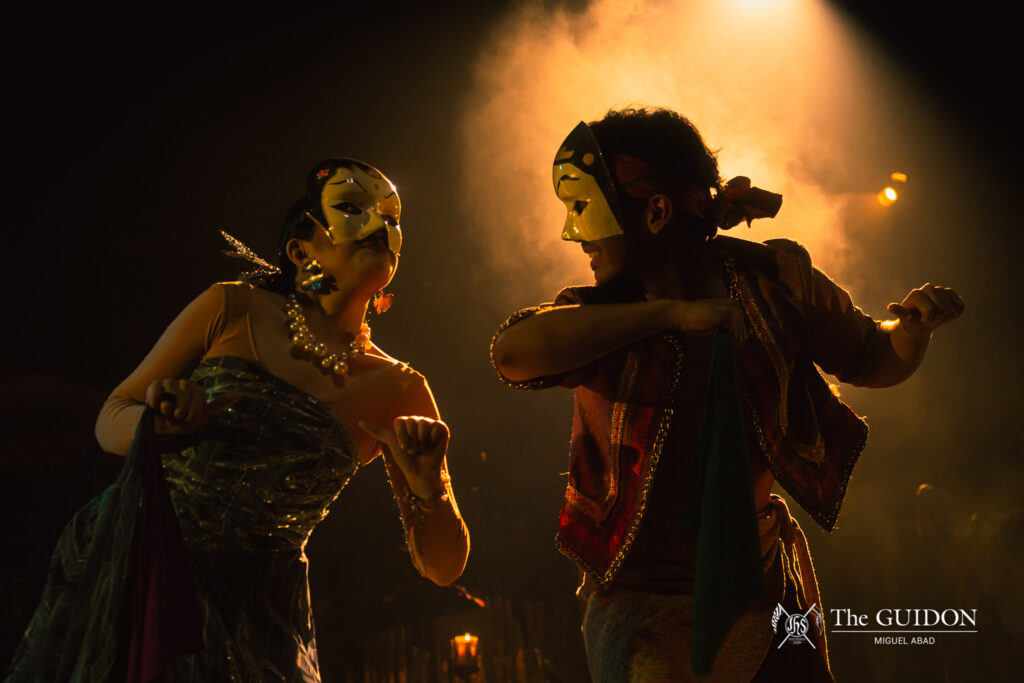Science fiction calls to mind the futuristic, supernatural, and fantastical realms that are so like the world today but at the same time aren’t. The imaginative and supernatural content of sci-fi works to provide the reader with exactly that: A story immersed in the matters of the speculative and the real. Ateneo Biology professor Ronald Allan Cruz bridges this gap between fiction and nonfiction with his new book, The Cosmic Wild, which makes one wonder if the creatures of fiction are closer and more real than we think.
The writer behind the teacher
Cruz has been teaching as a full time professor for the Biology Department of the Ateneo since 2009. Having graduated from the course himself, Cruz has gone on to become the Biology Department’s Undergraduate Programs Coordinator, as well as the founder and moderator of the Ateneo Biological Organization (BOx).
Behind the biologist facade, though, is a passionate writer. Cruz has authored and published several laboratory manuals and academic journals that have been published locally and internationally, but his penchant for writing does not end in the sciences. A self-professed horror, fantasy, and science fiction fan, his love of both science and literature has produced several short stories; one of which has been featured in writer Dean Alfar’s book series, Philippine Speculative Fiction Volume 4 in 2009 and again in The Best of Philippine Speculative Fiction 2005-2010 in 2013.
After the successful creation and reception of his elective, The Biology of Science Fiction (Bi 14), Cruz found inspiration to publish another book that will serve as both a textbook and a piece of literature.
A joint effort between Cruz and Maria Mina, a former professor from the English Department, Bi 14 was originally supposed to cover speculative fiction which includes fantasy, horror, and science fiction, but after some trial runs with teaching and urging from Mina, the course was eventually narrowed down to science fiction only. The class, ultimately becoming the backbone of Cruz’s Cosmic Wild: Biology of Science Fiction, is a nonfictional collection of scientific articles and essays that talk about particular topics in Biology touched on in science fiction.
The Cosmic Wild
Because of science fiction’s limited following in the country, something like Bi14 was new territory within the academe. And since there were no existing textbooks or manuals to teach his students, Cruz was made to turn to compiling short stories, novels and biological texts for the class’s reading material. After three years, he realized he had enough text to turn into a book.
“I got my lectures, modified them, wrote a manuscript, [and] submitted it to the university press. They liked the idea because it was quite novel. It’s interdisciplinary, which is something that Ateneo goes for nowadays,” Cruz shares.
Aside from meeting scholarly needs, Cruz shares that he wrote the book in part because of his fondness for the two fields, “I wanted to have an output…marrying my desires and my passions on the science I pursue as a profession and the stuff that I actually like reading and watching about.” He also wanted to encourage the increasing interest in science fiction that comes from films, which is why he made sure anyone could relate and understand the book’s content.
Each chapter uses at least one major primary source, whether short story, novel, or film, that pertains to science fiction and discusses the science behind the main idea. “For instance, with [the chapter on] evolution, our main source is The Time Machine by H.G. Wells. In ecology, our primary one is Dune by Frank Herbert. We go into specifics, but not into the level of higher biology.”
The Philippine scene
For the longest time, the Philippine literary community did not know what to make of science fiction works. The closest acknowledgement it received was a category in the Palanca Awards labelled, “Best Futuristic Fiction”.
Cruz says that the title could have been rephrased better to encompass science fiction as a whole, “Science fiction doesn’t necessarily have to be futuristic and setting aside a separate category for science fiction is [like] saying…it doesn’t deserve to be in the category of “Best Novel”, which can be any other genre.”
Today, followers of science fiction are not in short supply in the Philippines, evidently seen in the comic and toy conventions held throughout the year. Though they are fans of science fiction, few are fans of Filipino science fiction.
“It’s still pretty much a fringe genre in Philippine literature. I think the literary community still doesn’t know how to handle science fiction,” Cruz says.
Going beyond
While Ron Cruz sets out to interest more readers in science fiction with his book, he admits that the genre is not as established as it needs to be to really gain a massive following.
Cruz believes that the reason for the limited reach may be due to the country’s educational system where science “isn’t a big thing” and textbooks are not very scientifically sound. The future looks promising, though, as Cruz believes science fiction as a genre is at least gaining ground thanks to film and TV.
Positive about its growth in the Philippines, Cruz remarks one of the things he hopes to achieve with his book is to get more people into reading science fiction. “Science fiction hasn’t had its solid footing yet, but it’s changing, it’s getting better,” as science fiction is always the art of the possible, never the impossible.






